Abstract
The area of judgment and decision making has given rise to the study of many interesting phenomena, including reasoning fallacies, which are also of interest to behavior analysts. Indeed, techniques and principles of behavior analysis may be applied to study these fallacies. This article reviews research from a behavioral perspective that suggests that humans are not the information-seekers we sometimes suppose ourselves to be. Nor do we utilize information effectively when it is presented. This is shown from the results of research utilizing matching to sample and other behavioral tools (monetary reward, feedback, instructional control) to study phenomena such as the conjunction fallacy, base-rate neglect, and probability matching. Research from a behavioral perspective can complement research from other perspectives in furthering our understanding of judgment and decision making.
Keywords: decision making, matching to sample, base-rate neglect, conjunction fallacy, probability learning, observing
Full text
PDF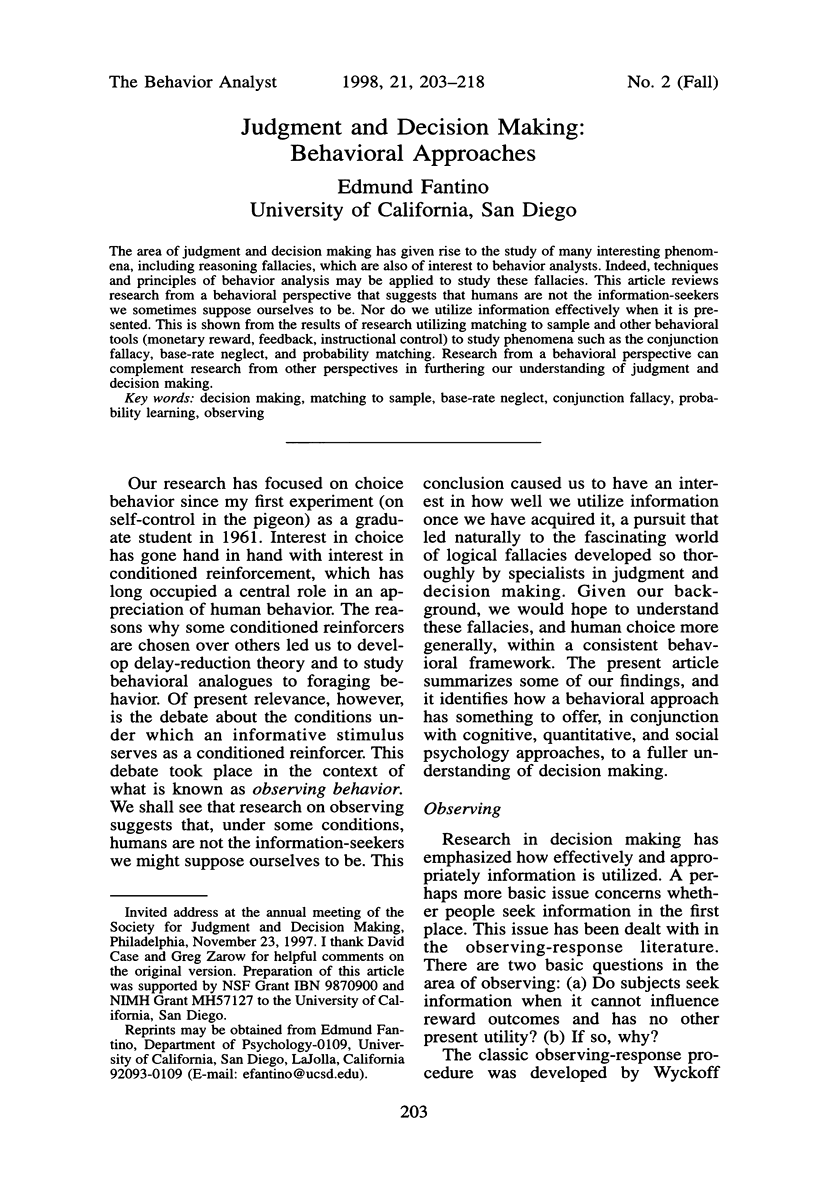
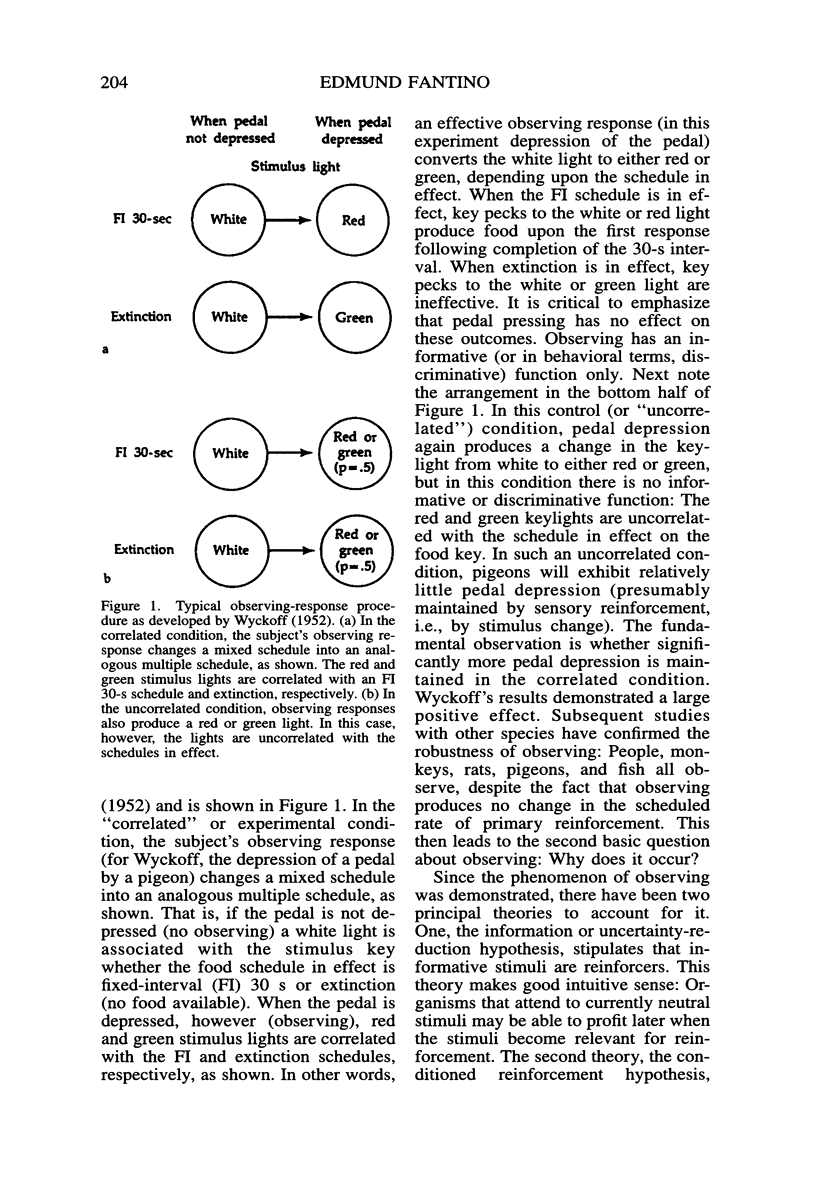
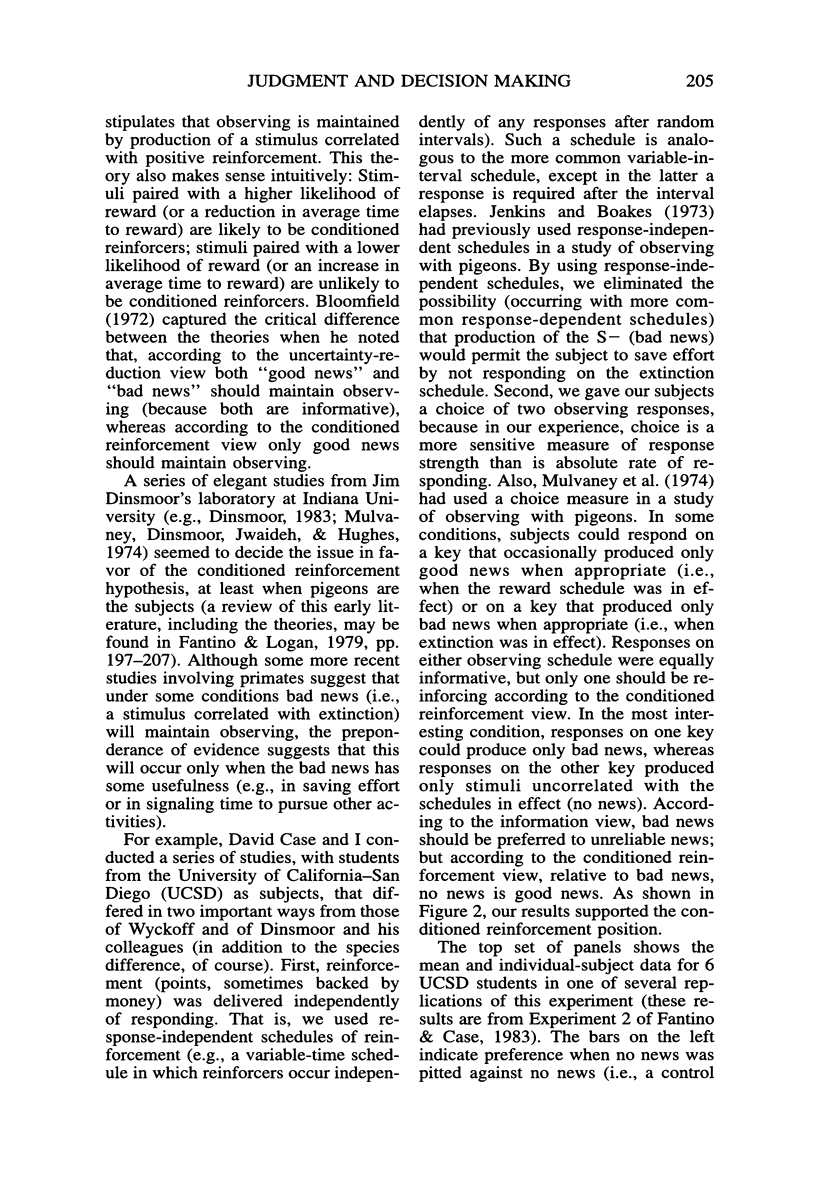
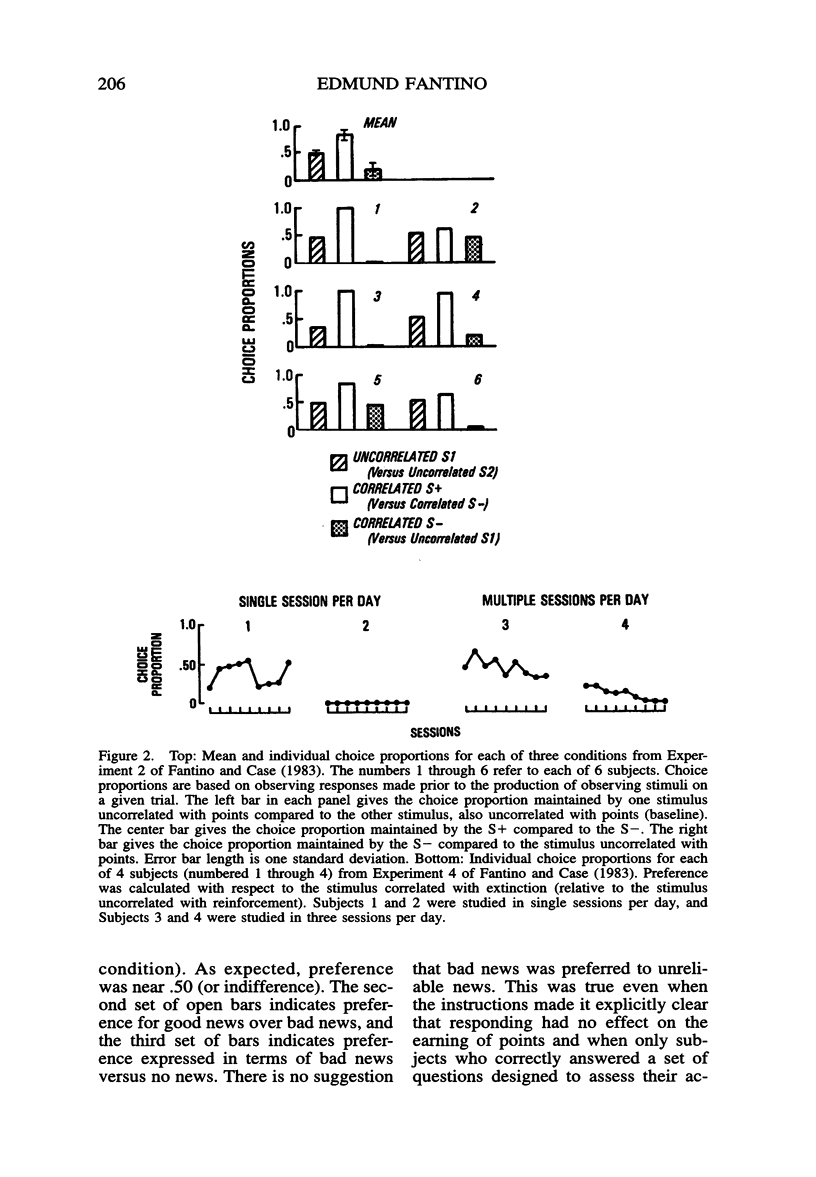
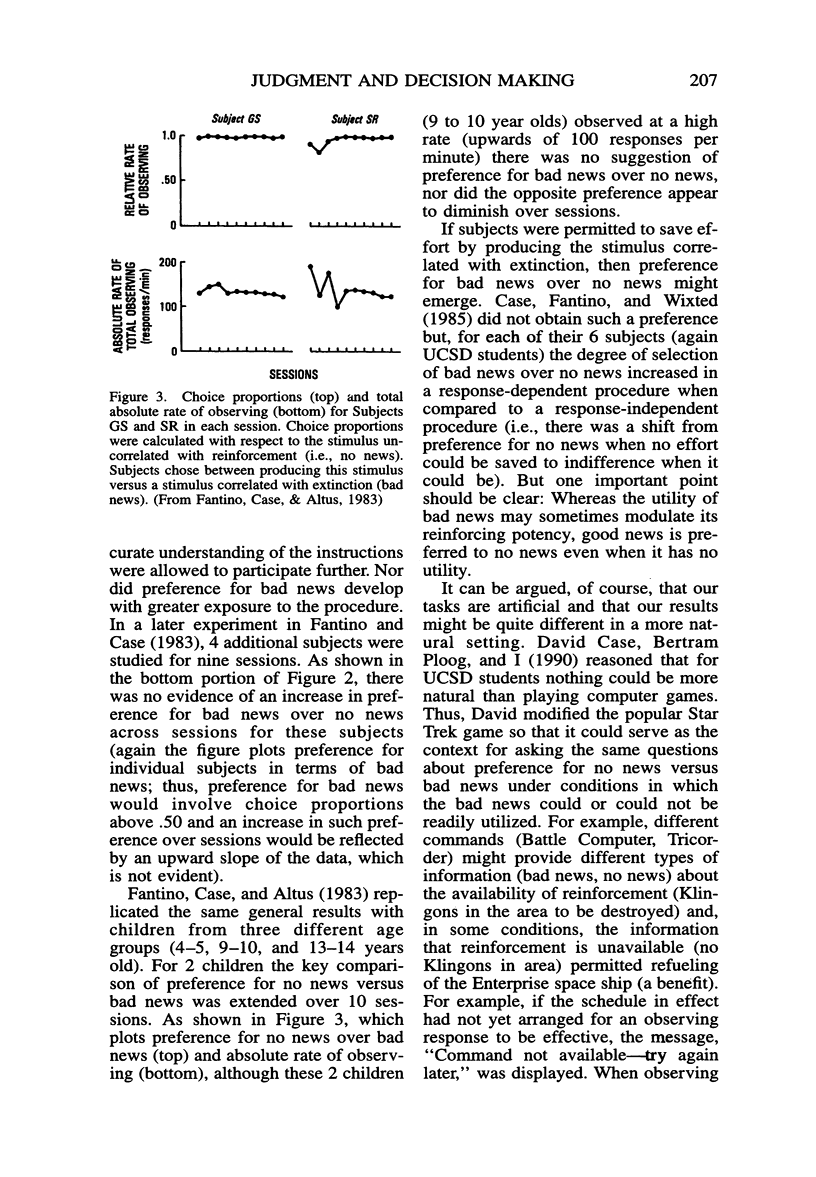
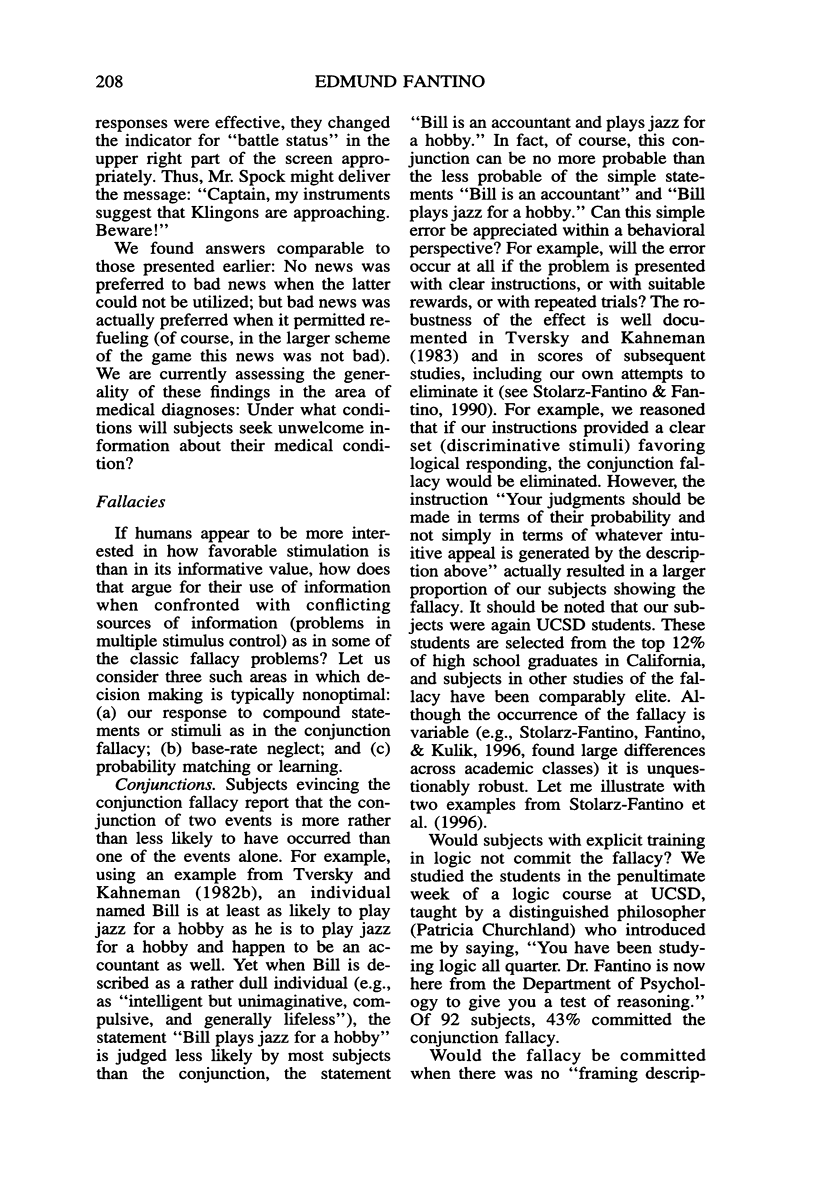
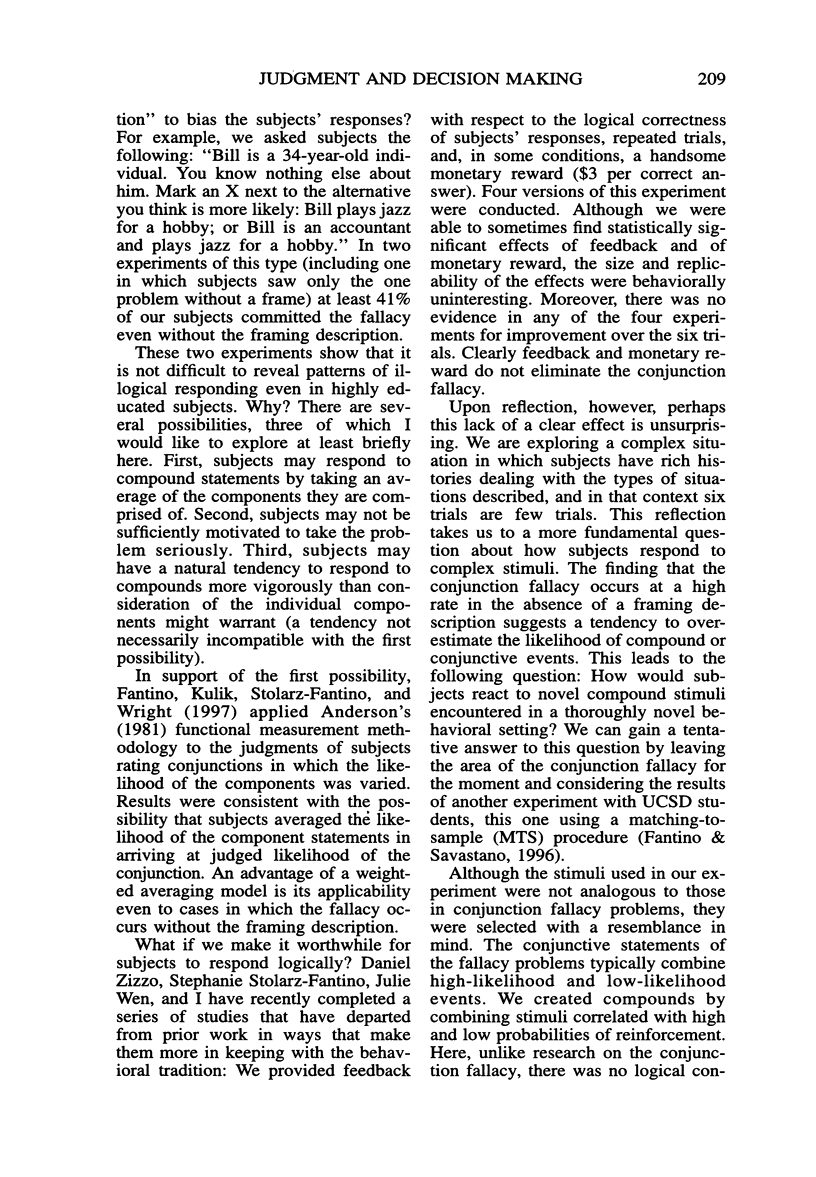
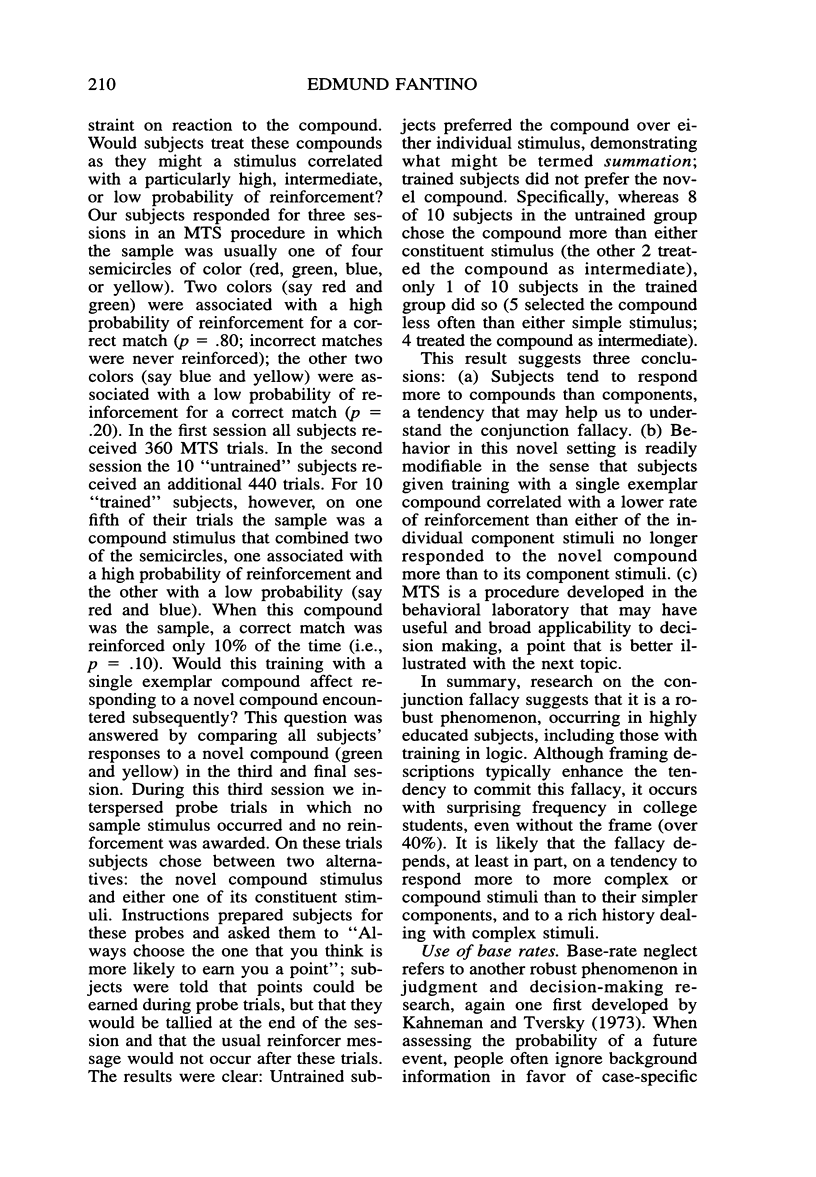
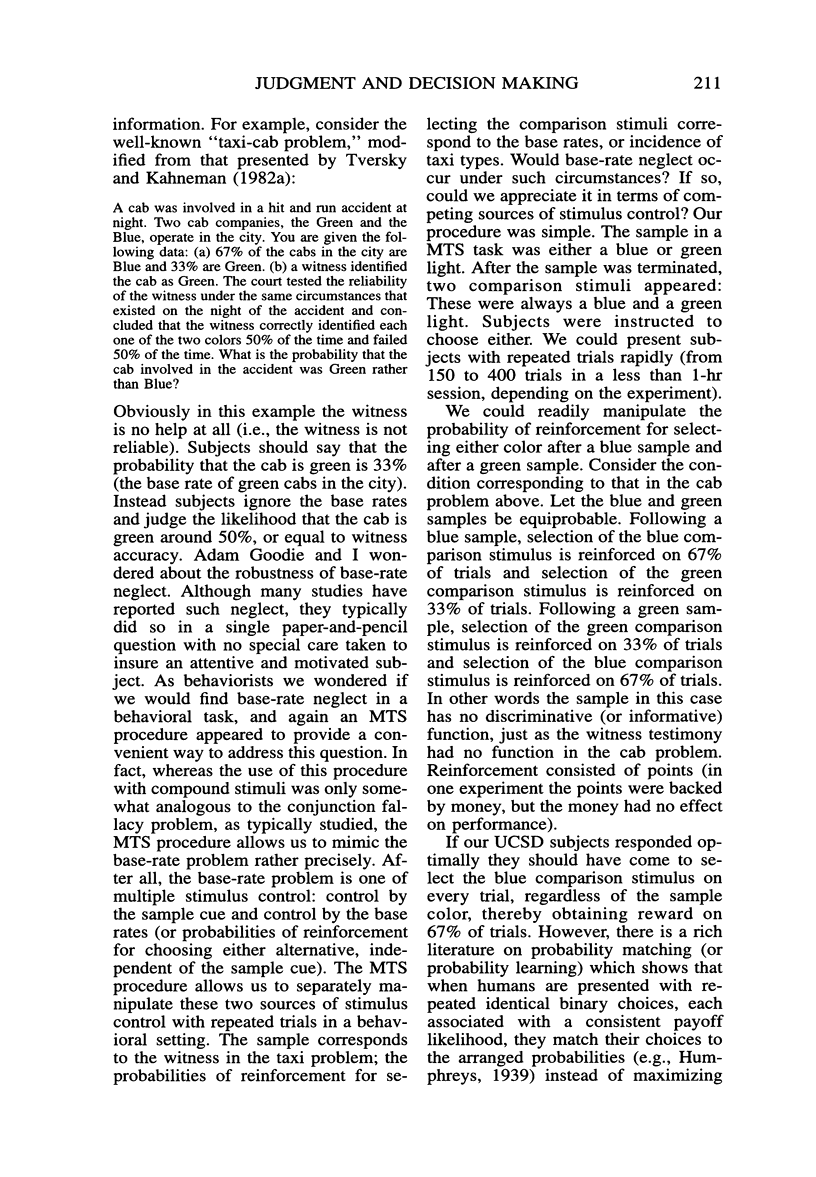

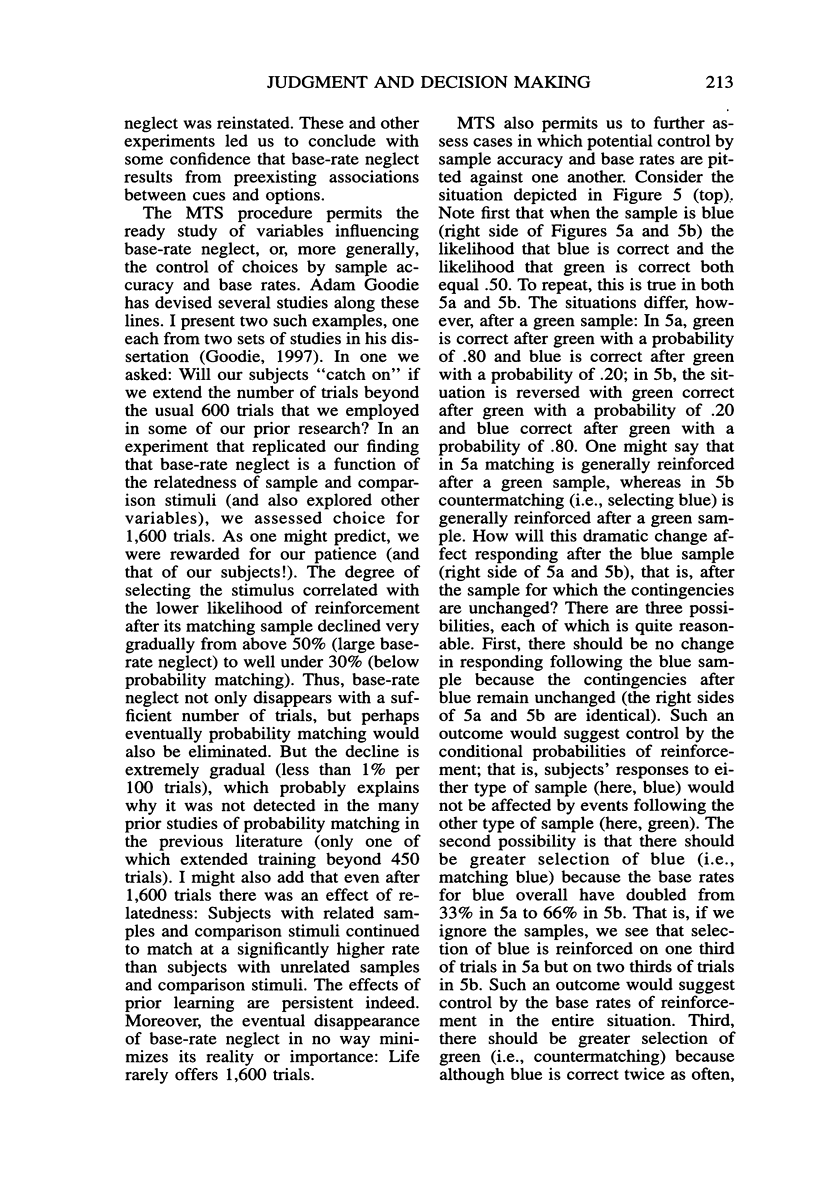
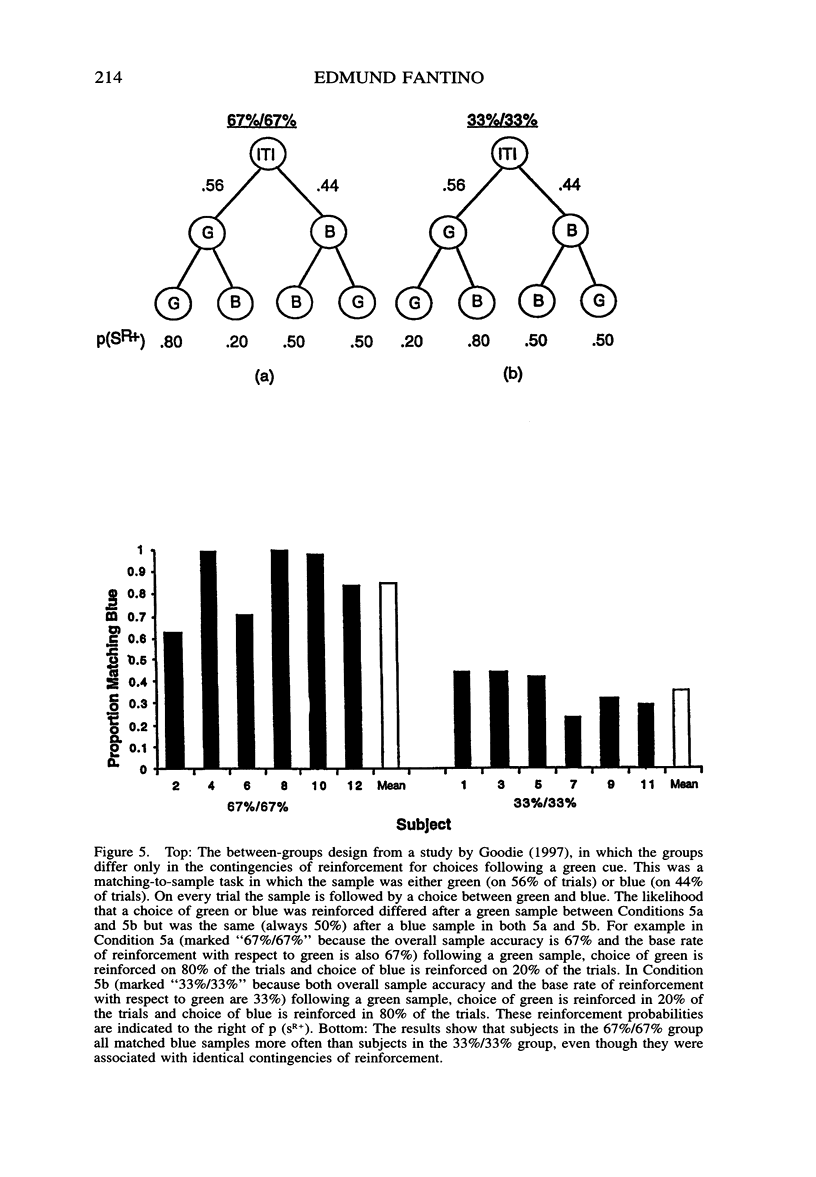
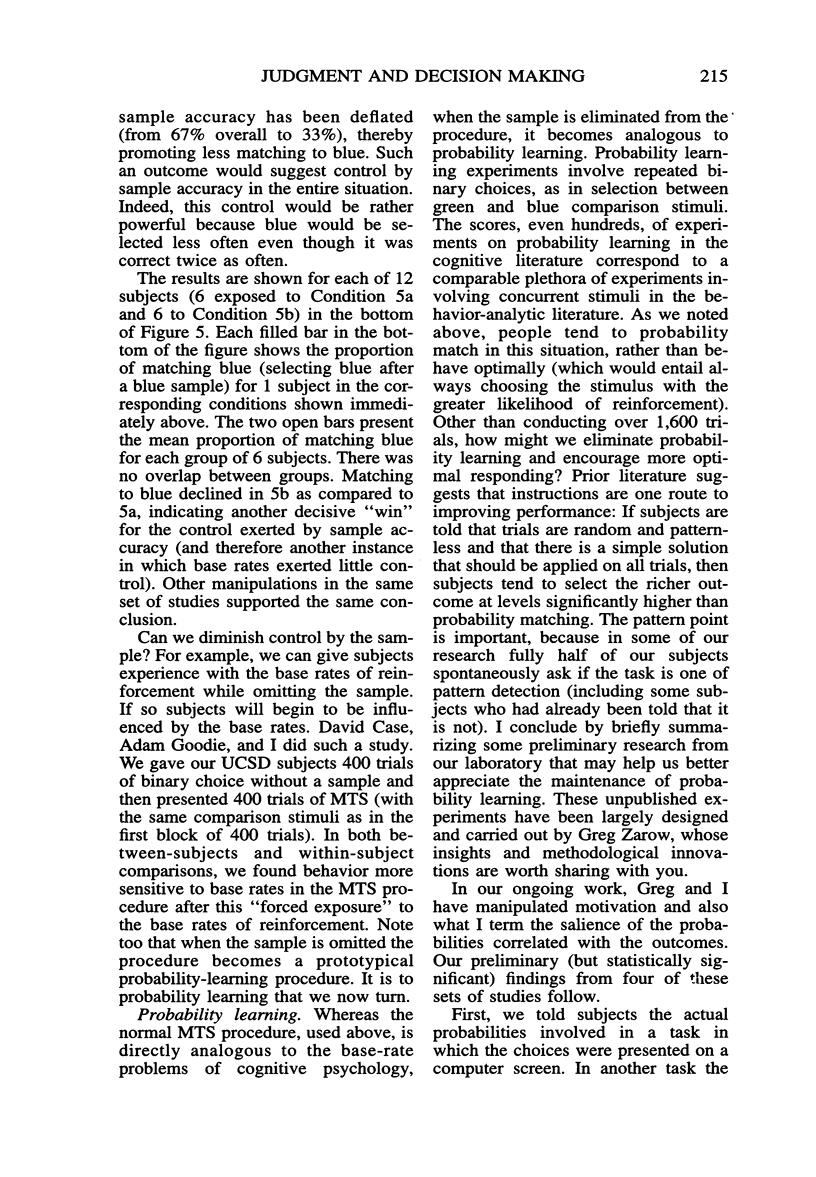

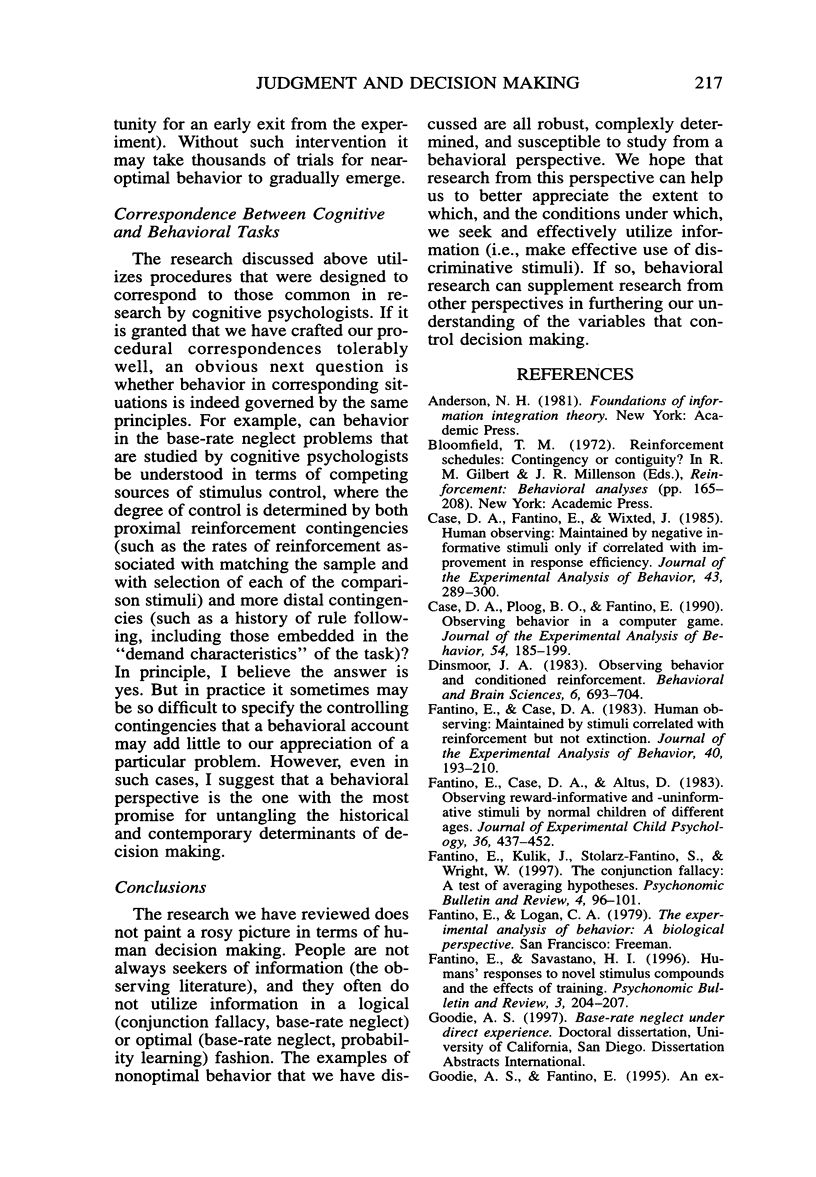
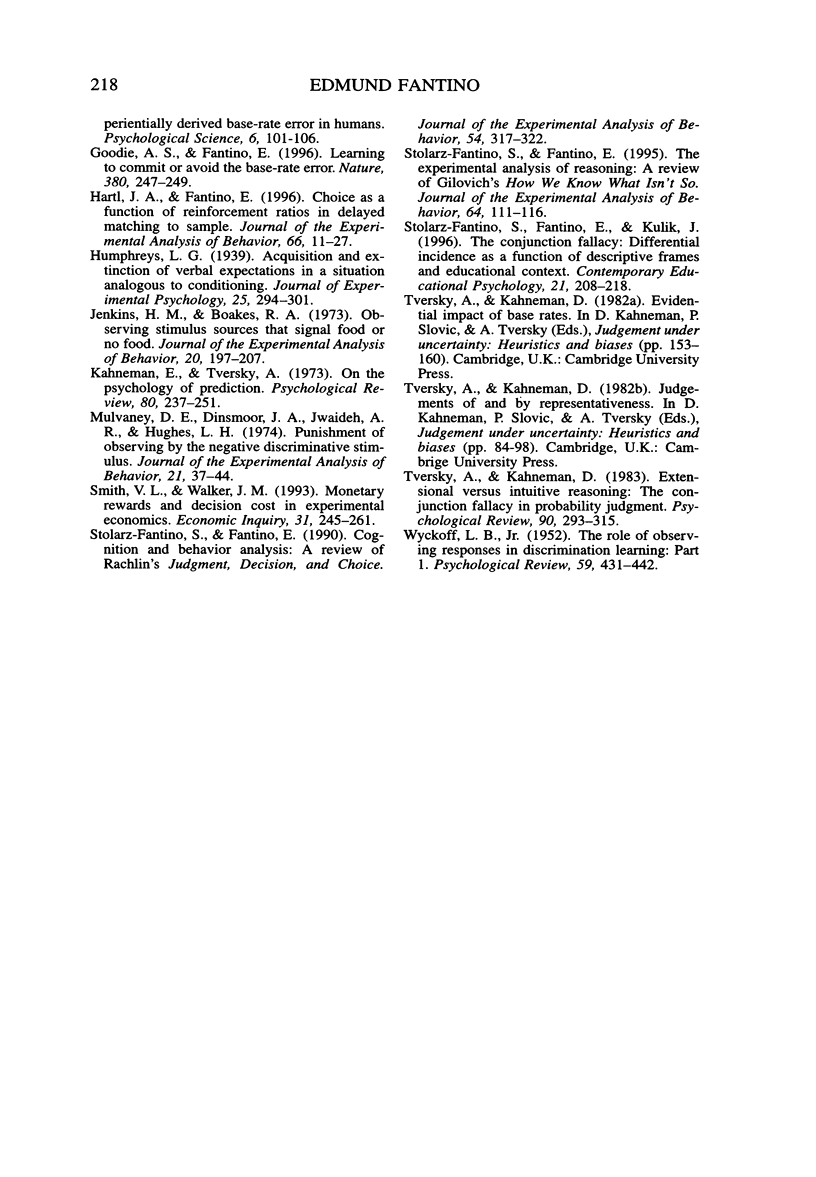
Selected References
These references are in PubMed. This may not be the complete list of references from this article.
- Case D. A., Fantino E., Wixted J. Human observing: maintained by negative informative stimuli only if correlated with improvement in response efficiency. J Exp Anal Behav. 1985 May;43(3):289–300. doi: 10.1901/jeab.1985.43-289. [DOI] [PMC free article] [PubMed] [Google Scholar]
- Case D. A., Ploog B. O., Fantino E. Observing behavior in a computer game. J Exp Anal Behav. 1990 Nov;54(3):185–199. doi: 10.1901/jeab.1990.54-185. [DOI] [PMC free article] [PubMed] [Google Scholar]
- Fantino E., Case D. A. Human observing: Maintained by stimuli correlated with reinforcement but not extinction. J Exp Anal Behav. 1983 Sep;40(2):193–210. doi: 10.1901/jeab.1983.40-193. [DOI] [PMC free article] [PubMed] [Google Scholar]
- Goodie A. S., Fantino E. Learning to commit or avoid the base-rate error. Nature. 1996 Mar 21;380(6571):247–249. doi: 10.1038/380247a0. [DOI] [PubMed] [Google Scholar]
- Hartl J., Fantino E. Choice As A Function Of Reinforcement Ratios In Delayed Matching-to-sample. J Exp Anal Behav. 1996 Jul;66(1):11–27. doi: 10.1901/jeab.1996.66-11. [DOI] [PMC free article] [PubMed] [Google Scholar]
- Jenkins H. M., Boakes R. A. Observing stimulus sources that signal food or no food. J Exp Anal Behav. 1973 Sep;20(2):197–207. doi: 10.1901/jeab.1973.20-197. [DOI] [PMC free article] [PubMed] [Google Scholar]
- Mulvaney D. E., Dinsmoor J. A., Jwaideh A. R., Hughes L. H. Punishment of observing by the negative discriminative stimulus. J Exp Anal Behav. 1974 Jan;21(1):37–44. doi: 10.1901/jeab.1974.21-37. [DOI] [PMC free article] [PubMed] [Google Scholar]
- doi: 10.1901/jeab.1995.64-111. [DOI] [PMC free article] [Google Scholar]
- Stolarz-Fantino S., Fantino E. Cognition and behavior analysis: a review of Rachlin's judgment, decision, and choice. J Exp Anal Behav. 1990 Nov;54(3):317–322. doi: 10.1901/jeab.1990.54-317. [DOI] [PMC free article] [PubMed] [Google Scholar]
- WYCKOFF L. B., Jr The role of observing responses in discrimination learning. Psychol Rev. 1952 Nov;59(6):431–442. doi: 10.1037/h0053932. [DOI] [PubMed] [Google Scholar]


